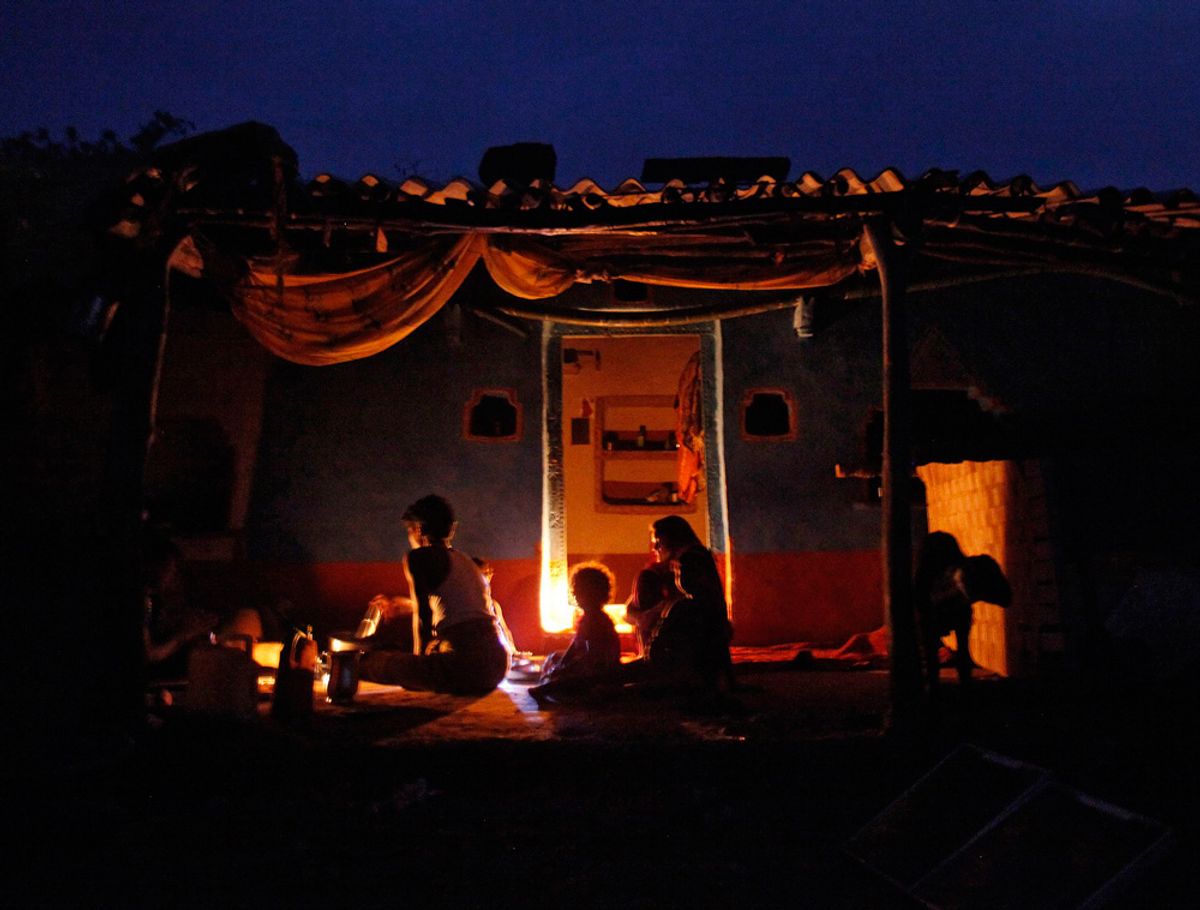7 August 2012—Both blackouts in India last week originated with disturbances on the same transmission line, according to the National Load Despatch Centre (NLDC) [PDF], which is responsible for monitoring the national grid and managing interregional links. Prior to both grid failures, the line that connects Agra, in the northern regional grid, to Bina, part of the western grid 400 kilometers farther south, faced power flow well beyond its normal operating limits.
According to a preliminary notice that the NLDC released on 1 August, the 400-kilovolt circuit was carrying up to 1000 megawatts of power. In India, the transmission utility usually tries to keep power flow below “surge impedance loading” [PDF], a level at which the voltage at the sending and receiving end of the line is exactly the same because reactive power is neither produced nor absorbed. The 1000 MW of power flow was well above surge impedance loading for the section, which the NLDC calculated to be 691 MW.
Crossing surge impedance loading doesn’t mean catastrophe is imminent. But beyond it, the reactive component of the power flow decreases the voltage at the receiving end of the line. If you keep increasing the power flow, eventually the system will become unstable and susceptible to disturbances.
So why was the load on the Agra line so high? Normally, there are two circuits there, which share the load. But on 28 July, the utility shut down the second circuit to upgrade its capacity, from 400 kV to 765 kV.
Increasing the capacity of India’s transmission network will be vital to meeting the country’s growing need for power. While much of the increase in demand will be in the west and south, suitable areas for added generation lie mainly in the eastern region. Linking supply to demand will require very long transmission lines. New power plants are being built on schedule, says R. Nagaraja, managing director at the Power Research & Development Consultants, in Bangalore, but they may lack transmission lines to move all the potential power. Nagaraja says that much more money has been spent on new generation, without enough investment in transmission and distribution. Because it’s difficult to secure right-of-way for new transmission lines, it’s easier to upgrade the capacity of existing power corridors.
But in this case, engineers may not have properly taken into consideration how a planned outage would affect the grid in the midst of a monsoon season that delivered a below-average amount of rainfall. The circuit went offline just as farmers tapped the grid for a greater than normal amount of energy to pump water to fields for irrigation. “Proper outage management is essential,” says Nagaraja. Anytime a shutdown is scheduled, engineers should analyze how it will affect load flow. The trouble started almost as soon as the upgrade started. The NLDC report reveals that on 29 July, a day before the first blackout, the line experienced a “near miss situation.”
Increasing the voltage of transmission lines is one way to increase their power capacity. But Nagaraja says that India should also be making better use of what it already has. “If I can’t construct new [transmission lines], then I should go for dynamic compensation so that in the same corridor I can push more power,” he says. With dynamic compensation and flexible AC transmission systems, the existing 400-kV lines should remain stable while carrying about twice as much power as surge impedance loading, or about the amount that tripped the Agra line and started a cascading effect. “If you look at [the] transmission sector worldwide and compare it to India—the amount of dynamic compensation and flexible AC transmission installation—it’s not happening here,” says Nagaraja.
